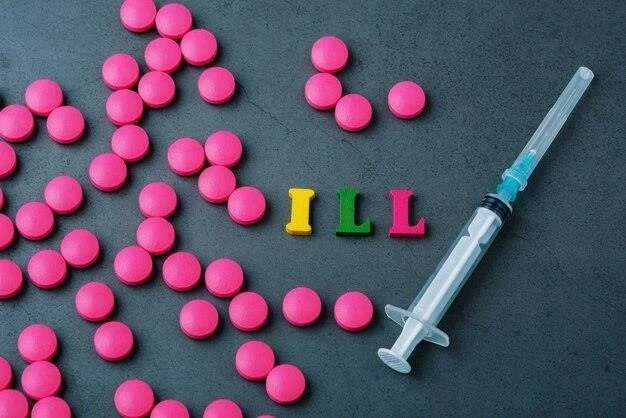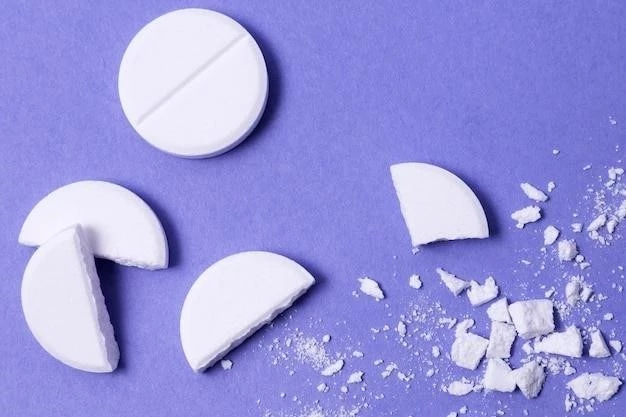Pitavastatin⁚ Overview and Uses
Introduction to Pitavastatin
Pitavastatin is a medication classified as a statin, used primarily for lowering cholesterol levels in individuals at risk of cardiovascular disease․ It works by inhibiting an enzyme involved in the production of cholesterol in the liver․ Pitavastatin is commonly prescribed alongside a healthy diet and exercise to manage high cholesterol levels․ Understanding the mechanism of action and potential benefits of pitavastatin is crucial for effectively treating hypercholesterolemia and reducing the risk of heart-related complications․
Uses of Pitavastatin
Pitavastatin is primarily used to lower high levels of cholesterol in the blood, specifically low-density lipoprotein (LDL) cholesterol․ By reducing LDL levels, pitavastatin helps decrease the risk of heart attack, stroke, and other cardiovascular diseases in individuals with hypercholesterolemia․ Additionally, it may be prescribed to individuals with mixed dyslipidemia or as a preventative measure in those at risk of developing atherosclerosis․ When combined with lifestyle modifications, pitavastatin plays a crucial role in managing and improving lipid profiles to promote cardiovascular health․
Common Side Effects of Pitavastatin
Overview of Common Side Effects
Common side effects of pitavastatin may include muscle pain (myalgia), headache, constipation, and nausea․ These side effects are usually mild and temporary, often resolving as the body adjusts to the medication․ It is important to report any persistent or severe side effects to your healthcare provider to ensure proper management and to prevent any potential complications; Monitoring for these common side effects is essential for optimizing the safety and tolerability of pitavastatin therapy․
Management of Common Side Effects
Managing common side effects of pitavastatin involves discussing any symptoms with your healthcare provider․ In the case of muscle pain, proper hydration, gentle stretching, and over-the-counter pain relievers may help․ For gastrointestinal issues like constipation or nausea, dietary adjustments, increased fluid intake, and lifestyle modifications can be beneficial․ It is crucial to follow your healthcare provider’s guidance and attend regular check-ups to address and alleviate any common side effects effectively while on pitavastatin therapy․
Serious Side Effects of Pitavastatin
Identification of Serious Side Effects
Serious side effects of pitavastatin may include signs of liver problems like yellowing of the skin or eyes, severe muscle pain, and allergic reactions with symptoms such as rash, swelling, or difficulty breathing․ It is essential to promptly report any of these symptoms to your healthcare provider for further evaluation and appropriate management․ Monitoring for these serious side effects is crucial to ensure the safe use of pitavastatin and prevent any potential complications․
Immediate Medical Attention
If you experience serious side effects from pitavastatin such as signs of liver issues, severe muscle pain, or allergic reactions, seek immediate medical attention․ Contact your healthcare provider or go to the nearest emergency room for prompt evaluation and treatment․ Swift medical intervention is crucial in addressing serious side effects to prevent any potential complications and ensure your well-being․ Do not hesitate to seek help if you suspect you are experiencing severe adverse reactions while taking pitavastatin․

Pitavastatin Drug Interactions
Common Drug Interactions
Common drug interactions with pitavastatin may occur when combined with medications like gemfibrozil, cyclosporine, or rifampin, which can increase the risk of muscle-related side effects․ Additionally, certain antifungal agents, protease inhibitors, and some antibiotics may interact with pitavastatin, affecting its metabolism and efficacy․ It is important to inform your healthcare provider about all medications, including over-the-counter drugs and supplements, to minimize the risk of potential interactions while taking pitavastatin․ Close monitoring and dosage adjustments may be necessary when combining pitavastatin with other medications․
Impact on Effectiveness of Pitavastatin
Drug interactions can affect the effectiveness of pitavastatin by altering its metabolism or increasing the risk of side effects․ Concurrent use of medications that interact with pitavastatin may lead to reduced efficacy in lowering cholesterol levels or an elevated risk of adverse reactions․ It is crucial to be aware of potential drug interactions and consult with a healthcare professional to ensure the safe and effective use of pitavastatin․ Monitoring lipid levels and adjusting the treatment plan as needed can help maintain the desired therapeutic outcomes while minimizing the impact of drug interactions․
Pitavastatin Precautions and Warnings
Special Populations
In special populations such as pregnant or lactating women, the use of pitavastatin is not recommended due to potential risks to the fetus or nursing infant․ Individuals with liver or kidney impairment may require dosage adjustments or closer monitoring when using pitavastatin․ Additionally, caution is advised when prescribing pitavastatin to elderly patients or those with a history of muscle disorders․ Prior to initiating treatment, healthcare providers should assess individual risk factors and consider the appropriateness of pitavastatin therapy in these special populations to ensure safe and effective use․
Precautionary Measures
When taking pitavastatin, it is essential to adhere to a healthy lifestyle, including a balanced diet and regular exercise, to optimize its cholesterol-lowering effects․ Patients should follow their healthcare provider’s instructions regarding medication dosages and any necessary monitoring․ Routine liver function tests may be recommended to detect any potential liver abnormalities․ Avoid excessive alcohol consumption and inform your healthcare provider about all medications, including supplements, to prevent interactions․ By incorporating these precautionary measures, individuals can enhance the safety and effectiveness of pitavastatin therapy for managing high cholesterol levels․
Pitavastatin for High Cholesterol⁚ What You Need to Know
Importance of Managing High Cholesterol
Managing high cholesterol is crucial for reducing the risk of cardiovascular diseases such as heart attack and stroke․ Elevated cholesterol levels can lead to atherosclerosis, a condition where plaque accumulates in the arteries, causing blockages and restricting blood flow․ By lowering cholesterol levels through medications like pitavastatin and lifestyle modifications, individuals can significantly improve their heart health and overall well-being․ Regular monitoring and effective management of high cholesterol are essential to minimize the risk of heart-related complications and promote long-term cardiovascular health․
Key Considerations
When using pitavastatin for high cholesterol, it is essential to adhere to the prescribed dosage and schedule provided by your healthcare provider․ Regular follow-up appointments are necessary to monitor cholesterol levels, assess medication effectiveness, and address any potential side effects․ Lifestyle modifications such as a heart-healthy diet, regular physical activity, and smoking cessation can complement the effects of pitavastatin in managing cholesterol․ It is important to maintain open communication with your healthcare team, report any changes or concerns promptly, and actively participate in your treatment plan to achieve optimal results in lowering cholesterol and reducing cardiovascular risk․
